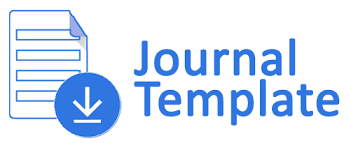Analisis Pajak Penghasilan Pasal 21 Sebelum dan Sesudah Penerapan Tarif Efektif Rata-Rata
DOI:
https://doi.org/10.37477/bip.v16i2.638Keywords:
pajak penghasilan, pajak penghasilan pasal 21, tarif efektif rata-rataAbstract
Before January 1 2024 Income Tax Article 21 for permanent employees is calculated using the Director General of Taxes Regulation Number PER-16/PJ/2016. Starting January 1 2024 Income Tax Article 21 for permanent employees is calculated using Government Regulation Number 58 of 2023 and Minister of Finance Regulation Number 168 of 2023. This research is intended to examine whether there is a difference in the amount of Income Tax Article 21 which is calculated using Regulation of the Director General of Taxes Number PER-16/PJ/2016 when compared using Government Regulation Number 58 of 2023 and Minister of Finance Regulation Number 168 of 2023. This research is classified as a type of library research using two approaches, namely the statutory approach (statute approach) and the comparative approach (comparative approach). To make it easier to draw conclusions, a simulation was carried out to calculate the amount of Income Tax Article 21 on five permanent employee data using Director General of Taxes Regulation Number PER-16/PJ/2016 and using Government Regulation Number 58 of 2023 and Minister of Finance Regulation Number 168 of 2023. The results of the research show that the Income Tax Article 21 deducted for each tax period in the period January to November using the provisions of the Director General of Taxes Regulation Number PER-16/PJ/2016 is greater in amount when compared to using Government Regulation Number 58 of 2023 and Ministerial Regulations Finance Number 168 of 2023. On the other hand, for the December tax period, the amount of Income Tax Article 21 which is deducted using Regulation of the Director General of Taxes Number PER-16/PJ/2016 is smaller when compared to using Government Regulation Number 58 of 2023 and Minister of Finance Regulation Number 168 2023. Overall, for one tax year, there is no difference in the amount of Income Tax Article 21 of permanent employees deducted, whether using the Director General of Taxes Regulation Number PER-16/PJ/2016 or Government Regulation Number 58 of 2023 and Minister of Finance Regulation Number 168 Year 2023.
Downloads
Published
How to Cite
Issue
Section
License
Authors publishing in this journal agree to the following terms:
- The author retains copyright and grants the journal rights of first publication with the work simultaneously licensed under a Creative Commons Attribution ShareAlike License License that allows others to share the work with acknowledgment of the author's work and initial publication in BIP's: Journal of Business Perspectives.
- Authors may include separate additional contractual arrangements for non-exclusive distribution of the published version of the journal (e.g., submit to an institutional repository or publish in a book), with an acknowledgment of the original publication in this Journal.
- Authors are permitted and encouraged to post their work online (e.g., in institutional repositories or on their websites) before and during the submission process, as it can lead to productive exchanges, as well as citations of previously published work.
Each author is expected to complete the copyright process with a document of the originality of the manuscript, the templated document is below:


7.png)


6.png)
2.png)


